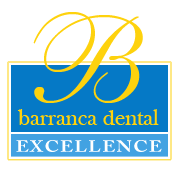[image_frame style=”framed_shadow” align=”right” alt=”Modern ADA-approved toothpaste protects and cleans your teeth | Irvine Dentist Neda Khodai, Barranca Dental – An Irvine Tradition of Dental Excellence” title=”Modern ADA-approved toothpaste protects and cleans your teeth | Irvine Dentist Neda Khodai, Barranca Dental – An Irvine Tradition of Dental Excellence” width=”300″ height=”200″]https://www.barrancadental.com/wp-content/uploads/2012/06/All-About-Toothpaste-Irvine-Dentist-Neda-Khodai-Barranca-Dental.jpg[/image_frame]
You know the drill: brush at least twice and floss at least once daily. Just what is the gel that you put on your toothbrush though? Toothpaste (or dentifrice if you want to be technical) is a light abrasive that helps your toothbrush remove dental plaque and protect your teeth. It is about as old as written history, but that doesn’t meant there haven’t been some improvements over the years. Read on to learn more about the tasty gel that helps your smile stay great.
The History of Toothpaste
As far as we know, it was the Greeks that started the trend of using an abrasive compound to clean teeth. The Romans improved the concept, but it mostly revolved around the use of crushed bones or oyster shells. Later, in the 9th century CE, a Persian musician and designer created a type of tooth paste that was more similar to what we know today than the Roman recipe, but its ingredients are still unknown. What is the biggest mystery to scientists is how these ancient toothpastes were used. Popular speculation is that a type of twig was used, and later on rags.
Tooth Powder
In 19th century Britain, Tooth Powder came into popularity. It consisted of pulverized chalk, salt, and even bricks. While the powder was a step up from no dental care, some of the commercial products at the time did more harm than good and decayed teeth rapidly. While the powder is not as efficient as modern pastes, it is still used in developing countries or in situations where a tube of gel is impractical (such as soldiers).
Modern Toothpaste
Toothpaste similar to what we are familiar with today began at the start of the 20th century, when a paste of hydrogen peroxide and baking soda was popularized. While toothpastes are continually researched and developed, our modern toothpaste was first seen in the 1950s. Current toothpastes contain a variety of ingredients, most commonly:
[fancy_list style=”circle_arrow”]
- Mild abrasives such as calcium carbonate or dehydrated silica gel to remove debris and surface stains.
- Fluoride to help reverse tooth decay and strength your enamel.
- Agents such as glycerol or sorbitol to make the paste gel-like, and colloids or gums to keep it thick.
- Sugarless flavors and sweeteners like saccharin.
- Detergents such as sodium lauryl sulfate, which will create the foam that helps carry plaque and food away from your teeth.
[/fancy_list]
Whitening Toothpastes
Most modern toothpastes claim to help whiten your teeth, but do they actually work? These pastes contain similar ingredients to those found in teeth bleaching gels, but lack the ability to change the color of teeth. They may help by using their abrasive proprieties and stain fighting chemicals like sodium tripolyphosphate to remove surface stains. Extensive usage of whitening toothpastes may damage enamel, but proper usage according to the manufaturer’s instructions has been found to help whiten teeth without posing a risk to your teeth. The most effective way to whiten your teeth is a professional teeth whitening procedure, such as Zoom! Teeth Whitening, but whitening toothpastes can help keep your teeth white and bright longer.
Herbal Toothpastes
Herbal toothpaste contains natural ingredients such as baking soda and plant extracts. While many consumers are looking for “natural” products in the current organic craze, herbal toothpaste is not as effective as modern ADA-approved toothpastes. The ingredients found in toothpaste are not intended to be swallowed, and the absorption rate through the gums is too low to be significant. Furthermore, the compounds found in toothpaste have not been found to pose a risk to humans in clinical studies, and all toothpaste sold in the United States must have FDA approval.
Contact Us!
Irvine Dentist Dr. Neda Khodai is ready to answer any questions you may have about toothpaste brands and usage, or to just help with a regularly scheduled cleaning. Call us at 949-553-1111 or click below to get in touch with Barranca Dental Excellence in Irvine, Orange County California. Se Habla Español!
[button size=”medium” link=”https://www.barrancadental.com/schedule-an-appointment-online/”]Schedule an Appointment Online[/button]
